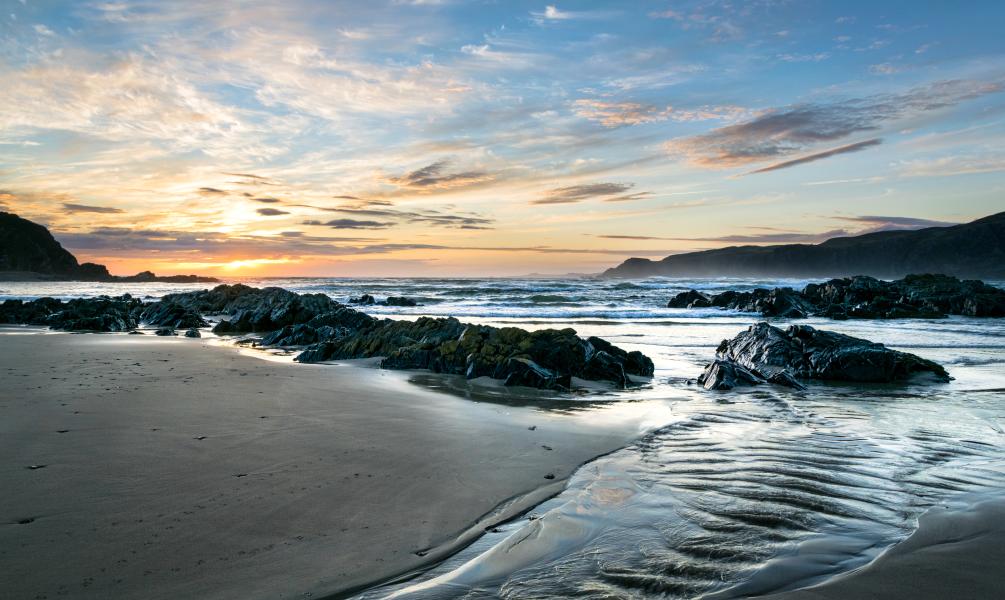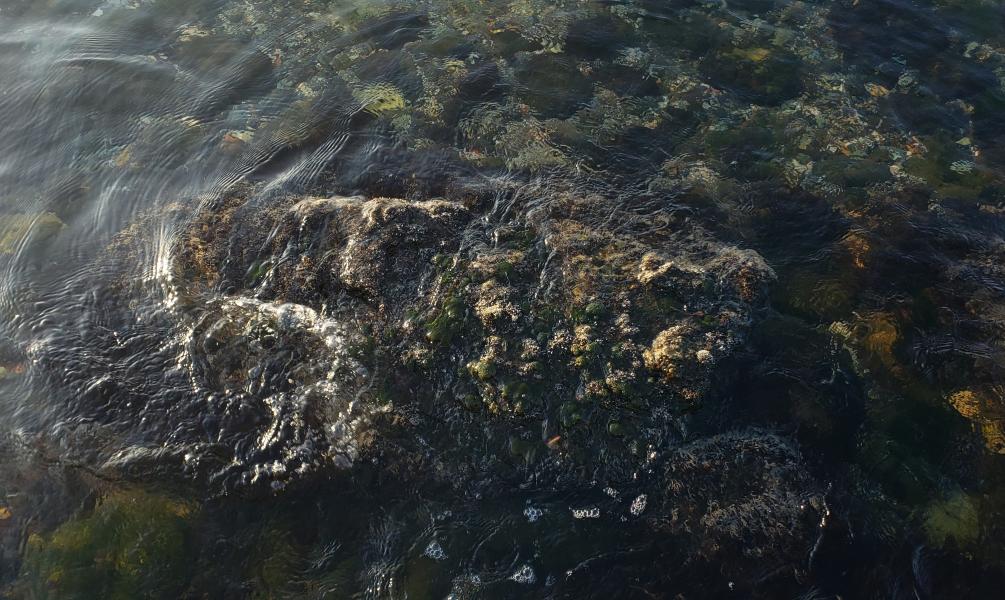The Ancient Healing Tradition of Sea Moss and Bladderwrack: A Journey Through Time and Culture
The ocean has been a source of life and inspiration for human beings since the dawn of time. The ancient wisdom of the ocean and its treasures have been passed down from generation to generation, and today we have the privilege of discovering its secrets. One such treasure is the combination of sea moss and bladderwrack, which has been used for centuries by healers and shamans in cultures around the world.
The use of sea moss and bladderwrack in healing practices can be traced back to ancient times. In Egypt, for example, sea moss was used in healing practices as far back as 1550 BC. Egyptians were one of the earliest civilizations to use sea moss and bladderwrack in their traditional medicine. The ancient Egyptians believed that sea moss had powerful healing properties, and they used it to treat a variety of illnesses and ailments. It was also used as a food source, as it was believed to provide energy and nourishment to the body. It is believed that they used these seaweeds to treat a variety of health conditions, including respiratory problems, digestive issues, and skin disorders. In fact, sea moss was considered so valuable that it was even buried with pharaohs in their tombs.
In Ireland, sea moss has been used for centuries as a traditional remedy for coughs, colds, and respiratory problems. It was also used as a food source during times of famine. In fact, Irish moss (a type of sea moss) is still a popular ingredient in Irish cuisine and is used in everything from soups and stews to desserts. Bladderwrack, on the other hand, was used in traditional medicine by the ancient Greeks and Romans, who believed that it had the power to heal a variety of ailments. Bladderwrack was used to treat joint pain and inflammation.

The use of sea moss and bladderwrack in traditional medicine has continued to this day, with many healers and shamans around the world still using these seaweeds in their practices. Sea moss and bladderwrack have also played a significant role in African traditional medicine. In West Africa, sea moss was used to treat respiratory infections and fever, while bladderwrack was used to treat thyroid problems. Sea moss is also used in West Africa to treat a variety of conditions, including digestive problems, skin conditions, and other infections. In East Africa, sea moss was used to treat skin conditions and digestive problems.
In the Caribbean, sea moss has been used for generations as a natural remedy for a variety of health conditions. It is often consumed in the form of a drink or mixed with other ingredients to create a paste that is applied topically to the skin. In Jamaica, for example, sea moss is often used as a natural remedy for a variety of illnesses, including colds, flu, and bronchitis. In Jamaica, sea moss is often combined with herbs and spices to make a popular drink called Irish moss drink.
The ancient healing tradition of sea moss and bladderwrack is a rich and fascinating history that spans cultures and continents. From Egypt to Ireland, from Jamaica to West Africa, these seaweeds have been used for centuries to heal and nourish the body. The tradition has been passed down through generations of healers and shamans, who have used their knowledge and wisdom to help others.

The use of sea moss and bladderwrack in healing practices is not limited to the Caribbean, Ireland, West and East Africa. These seaweeds have also played a significant role in traditional medicine in Asia. In Japan, for example, sea moss is known as “mekabu” and has been used in traditional medicine for centuries. Mekabu is rich in iodine, which is essential for healthy thyroid function. The Japanese have long believed that mekabu can help prevent thyroid disorders, as well as boost energy levels and improve overall health. In Japanese cuisine, mekabu is often added to soups and stews, and it is also used in salads and sushi.
In China, sea moss is known as “sheng chái” and has been used in traditional medicine for over 2,000 years. It is believed to have powerful antioxidant properties and is often used to treat inflammation, joint pain, and skin conditions. In Chinese cuisine, sea moss is used to thicken soups and stews, and it is also used in desserts and drinks.
In Korea, sea moss is known as “miyeok” and is a popular ingredient in traditional dishes. Miyeok is believed to have many health benefits, including improving digestive health, boosting the immune system, and promoting healthy skin and hair. In Korean traditional medicine, miyeok is often used to treat respiratory infections and colds.
Sea moss and bladderwrack have also been used in traditional medicine in other parts of Asia, such as India and Malaysia. In India, sea moss is known as “kappaphycus alvarezii” and is used in Ayurvedic medicine to treat a variety of health conditions, including joint pain, respiratory problems, and skin disorders. In Malaysia, sea moss is known as “agar-agar” and is used to treat digestive issues and promote overall health.

The use of sea moss and bladderwrack in traditional medicine in Asia is a testament to the widespread knowledge and understanding of the health benefits of these seaweeds. From Japan to China, Korea, India, and Malaysia, the ancient healing tradition of sea moss and bladderwrack has played an important role in maintaining the health and wellbeing of people for centuries.
The use of sea moss and bladderwrack in traditional medicine is a global phenomenon that spans cultures and continents. From the Caribbean to Ireland, from West and East Africa to Asia, these seaweeds have been used for centuries to promote health and well-being.
Today, we have the opportunity to tap into this ancient wisdom and incorporate sea moss and bladderwrack into our daily routines. By doing so, we are not only investing in our own health but also connecting with a rich history of healing and wellness that dates back centuries. We are helping to preserve the treasures of the ocean for future generations, and we are continuing a tradition that has been passed down for thousands of years.
In conclusion, the ancient healing tradition of sea moss and bladderwrack is a testament to the power and wisdom of nature. It reminds us of the importance of connecting with the natural world and of the many treasures that it holds. By incorporating sea moss and bladderwrack into our daily routines, we can tap into this ancient wisdom and experience the many benefits that it has to offer.
References:
- Earner, S. (2019). Bladderwrack: An Ancient Medicinal Plant. Alternative and Complementary Therapies, 25(4), 161-164. https://doi.org/10.1089/act.2019.29279.sea
- Fuentes, C. L., & Pauchard, N. A. (2019). Seaweeds as therapeutic agents: An exploration of seaweed bioactive compounds as potential therapeutics for human health. Journal of Applied Phycology, 31(5), 2563-2584. https://doi.org/10.1007/s10811-019-01873-3
- Lachman, M., & Kubala, S. (2019). Sea Moss: A Nutrient-Rich Seaweed With Potential Health Benefits. Food Technology, 73(11), 22-31. https://doi.org/10.1094/FT-0028-19
- O’Sullivan, A. M., O’Callaghan, Y. C., O’Grady, M. N., Queguineur, B., Hanniffy, J., & Troy, D. J. (2010). In vitro and cellular antioxidant activities of seaweed extracts prepared from five brown seaweeds harvested in spring from the west coast of Ireland. Food Chemistry, 126(3), 1064-1070. https://doi.org/10.1016/j.foodchem.2010.11.011
- Phang, S. M., Lim, P. E., & Tan, C. L. (2015). Seaweed Research, Opportunities and Challenges: An Introduction. In Seaweed: Ecology, Nutrient Composition and Medicinal Uses (pp. 1-11). Nova Science Publishers.
- Rupérez, P. (2002). Mineral content of edible marine seaweeds. Food Chemistry, 79(1), 23-26. https://doi.org/10.1016/S0308-8146(02)00171-1
- Saravana, P. S., Cho, Y. J., Kim, S. M., Shim, J. S., & Chun, B. S. (2015). Biological activities of fucoidan-A Review of Recent Studies. Marine Drugs, 13(10), 5920-5944. https://doi.org/10.3390/md13105920
- “Dulse.” Atlantic Dulse. Accessed May 9, 2023. https://atlanticdulse.com/dulse-benefits-history-uses/.
- “History of Seaweed in Japan.” Ocean’s Balance. Accessed May 9, 2023. https://www.oceansbalance.com/pages/history-of-seaweed-in-japan.
- Tseng, Chun-Yu et al. “Fucoidan extracted from Taiwan Undaria pinnatifida induces cell cycle arrest and apoptosis in Hep G2 cells.” Marine drugs vol. 10,4 447-60. 26 Mar. 2012, doi:10.3390/md10040447
- Lee, Sang-Hoon et al. “Antioxidant activities of enzymatic extracts from brown seaweeds.” Bioresource technology vol. 99,14 (2008): 5779-84. doi:10.1016/j.biortech.2007.10.039
- “Seaweed and Algae.” Savor Health. Accessed May 9, 2023. https://savorhealth.com/seaweed-and-algae/.
